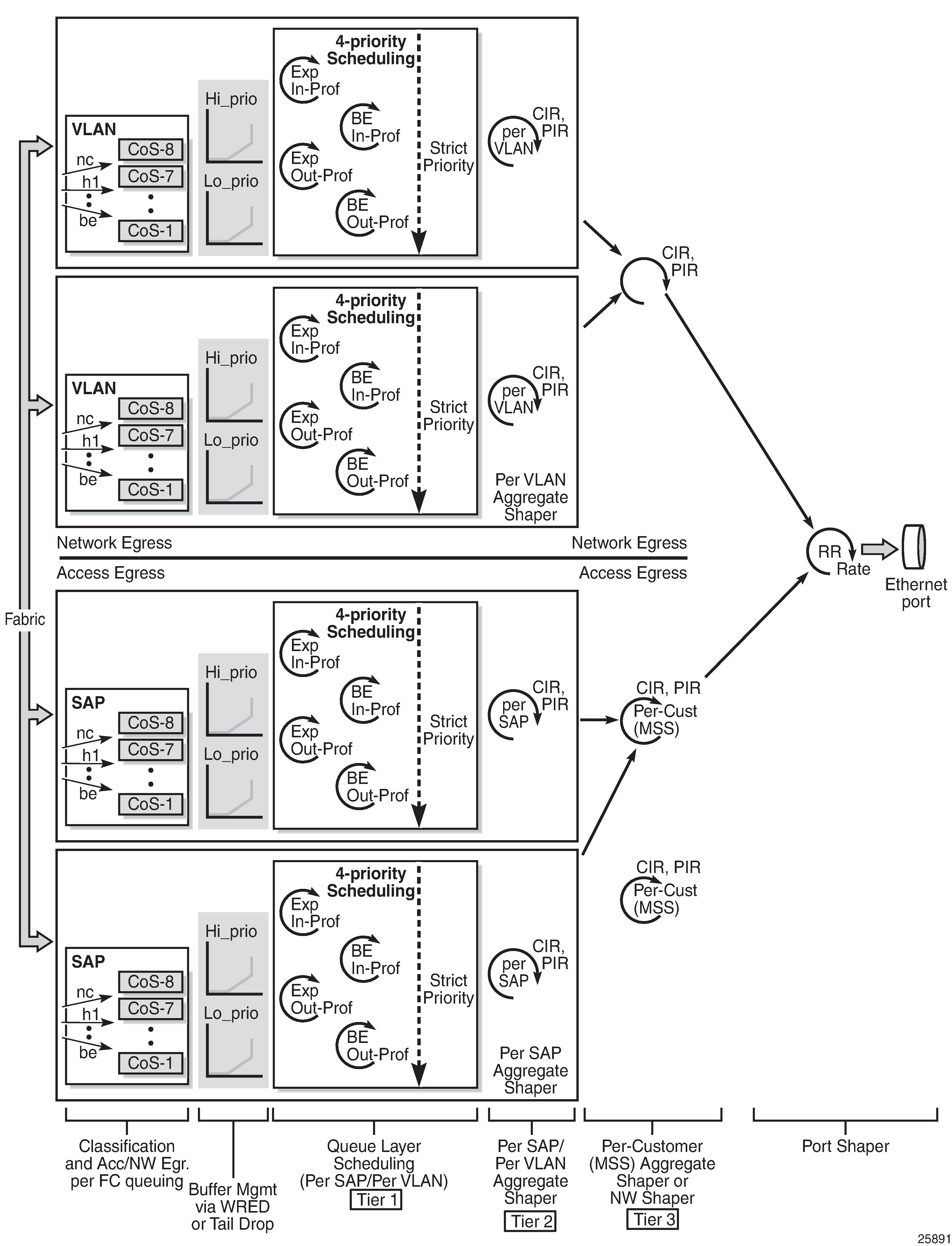For access ingress, access egress, and network ingress traffic, the behavior of 4-priority scheduling on Gen-3 hardware is similar to 4-priority scheduling on Gen-2 hardware. See Figure: 4-Priority Scheduling at Access Ingress (Gen-3 Hardware) (access ingress), Figure: 4-Priority Scheduling at Access Egress (Gen-3 Hardware) (access egress), Figure: 4-Priority Scheduling at Network Ingress (Gen-3 Hardware): Per-Destination Mode (network ingress, destination mode), and Figure: 4-Priority Scheduling at Network Ingress (Gen-3 Hardware): Aggregate Mode (network ingress, aggregate mode).
For network egress traffic through a network port on Gen-3 hardware, the behavior of 4-priority scheduling is as follows: traffic priority is determined at the queue-level scheduler, which is based on the queue PIR and CIR and the queue type. The queue-level priority is carried through the various shaping stages and is used by the 4-priority Gen-3 VLAN scheduler at network egress. See Figure: 4-Priority Scheduling at Network Egress (Gen-3 Hardware) on a Network Port and its accompanying description.
For hybrid ports, both access and network egress traffic use 4-priority scheduling that is similar to 4-priority scheduling on Gen-2 hardware. See Figure: 4-Priority Scheduling for Hybrid Port Egress (Gen-3 Hardware) and its accompanying description.
In Figure: 4-Priority Scheduling at Access Ingress (Gen-3 Hardware), the shaper groups all belong within one shaper policy and only one shaper policy is assigned to an ingress adapter card. Each SAP can be associated with one shaper group. Multiple SAPs can be associated with the same shaper group. All the access ingress traffic flows to the access ingress fabric shaper, in-profile (conforming) traffic first, then out-of-profile (non-conforming) traffic. Network ingress traffic functions similarly.
The 4-priority schedulers on Gen-2 and Gen-3 hardware are very similar, except that 4-priority scheduling on Gen-3 hardware is done on a per-SAP basis.
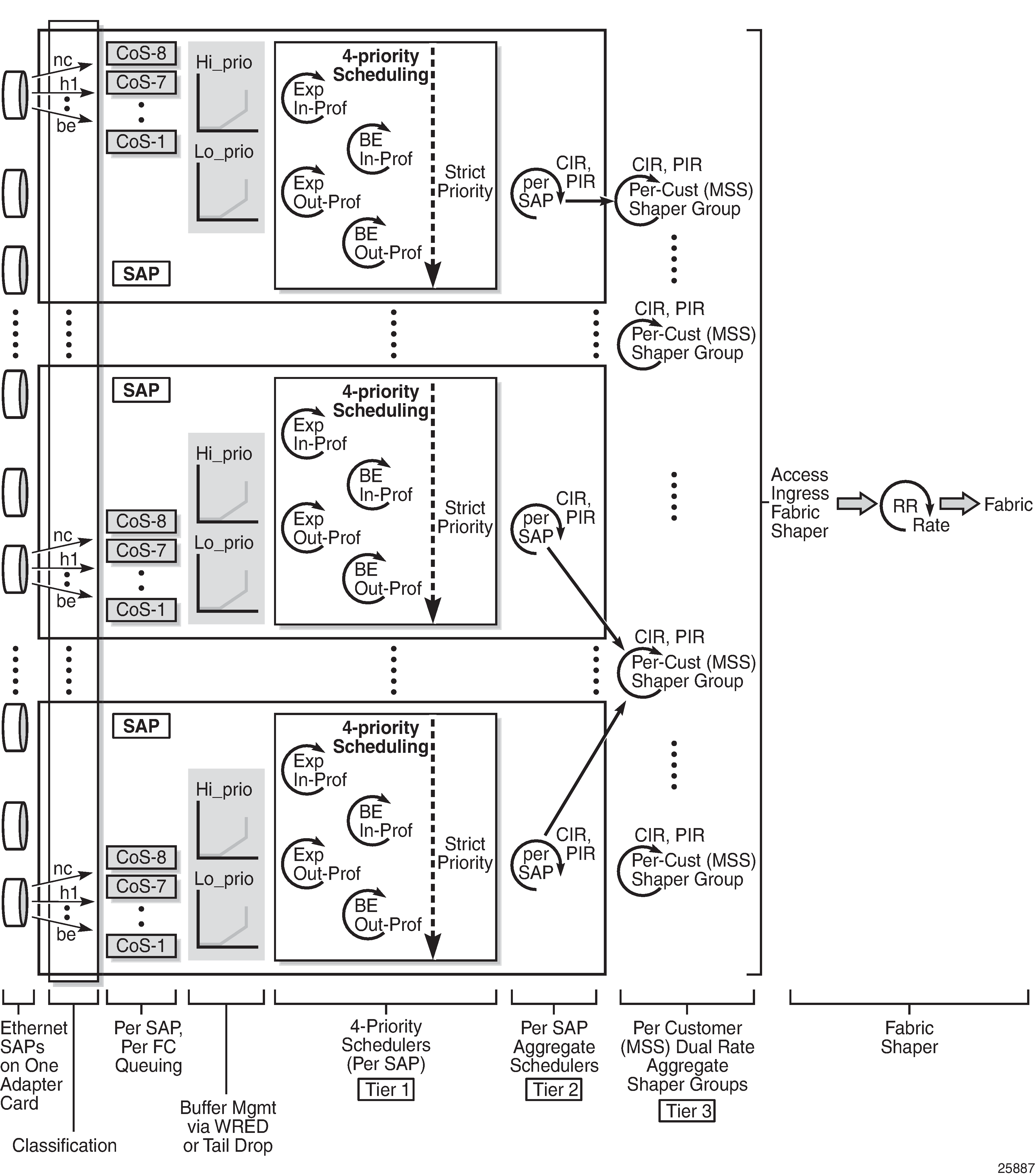
The following figure shows 4-priority scheduling for access egress on Gen-3 hardware. QoS behavior for access egress is similar to QoS behavior for access ingress.
The 4-priority schedulers on Gen-2 and Gen-3 hardware are very similar, except that 4-priority scheduling on Gen-3 hardware is done on a per-SAP basis.
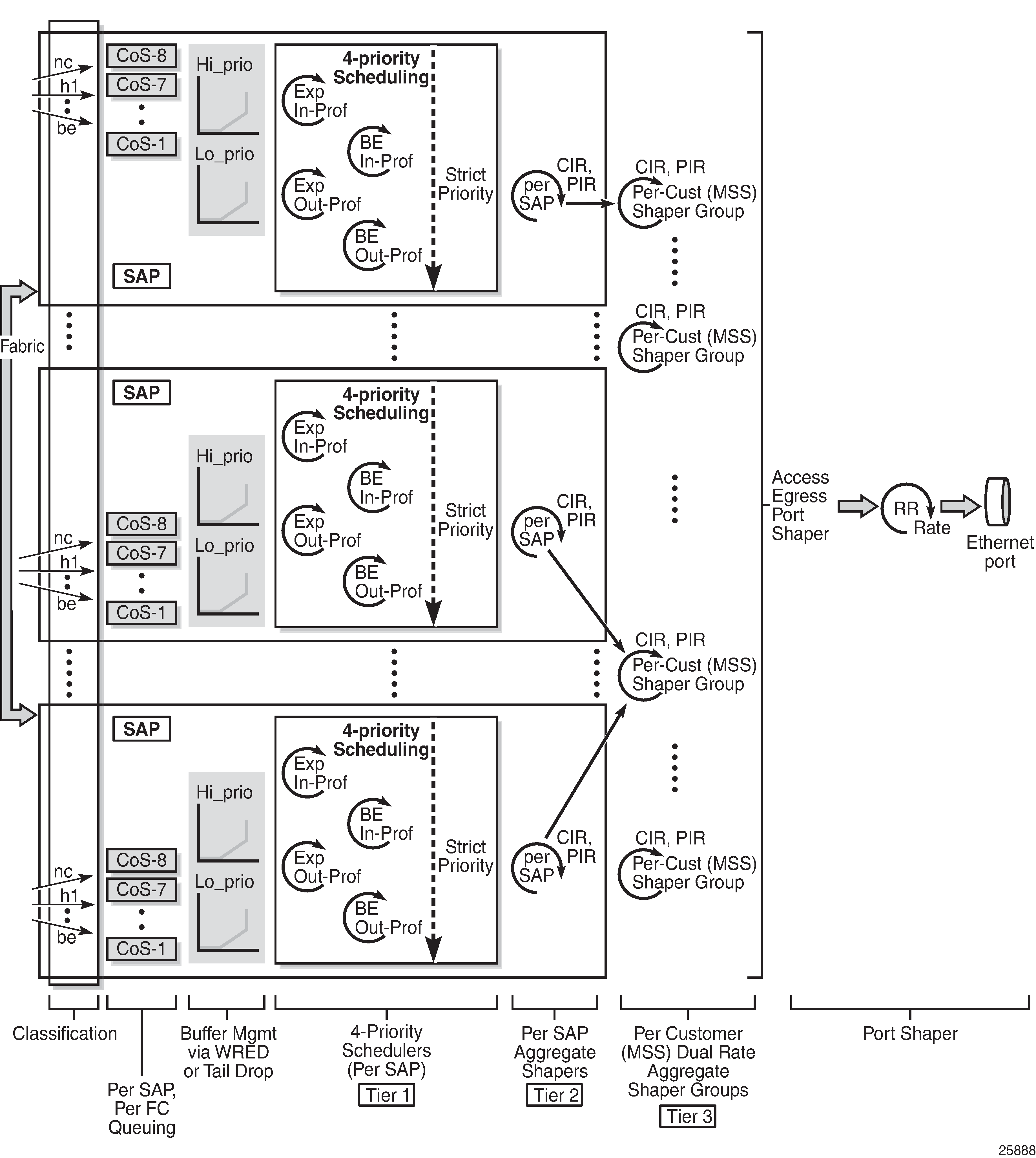
Figure: 4-Priority Scheduling at Network Ingress (Gen-3 Hardware): Per-Destination Mode and Figure: 4-Priority Scheduling at Network Ingress (Gen-3 Hardware): Aggregate Mode show network ingress scheduling for per-destination and aggregate modes, which are configured under the fabric-profile command. Traffic arriving on a network port is examined for its destination MDA and directed to the QoS block that sends traffic to the appropriate MDA. There is one set of queues for each block, and an additional set for multipoint traffic.
In Figure: 4-Priority Scheduling at Network Ingress (Gen-3 Hardware): Per-Destination Mode, there is one per-destination shaper for each destination MDA. In Figure: 4-Priority Scheduling at Network Ingress (Gen-3 Hardware): Aggregate Mode, there is a single shaper to handle all the traffic.
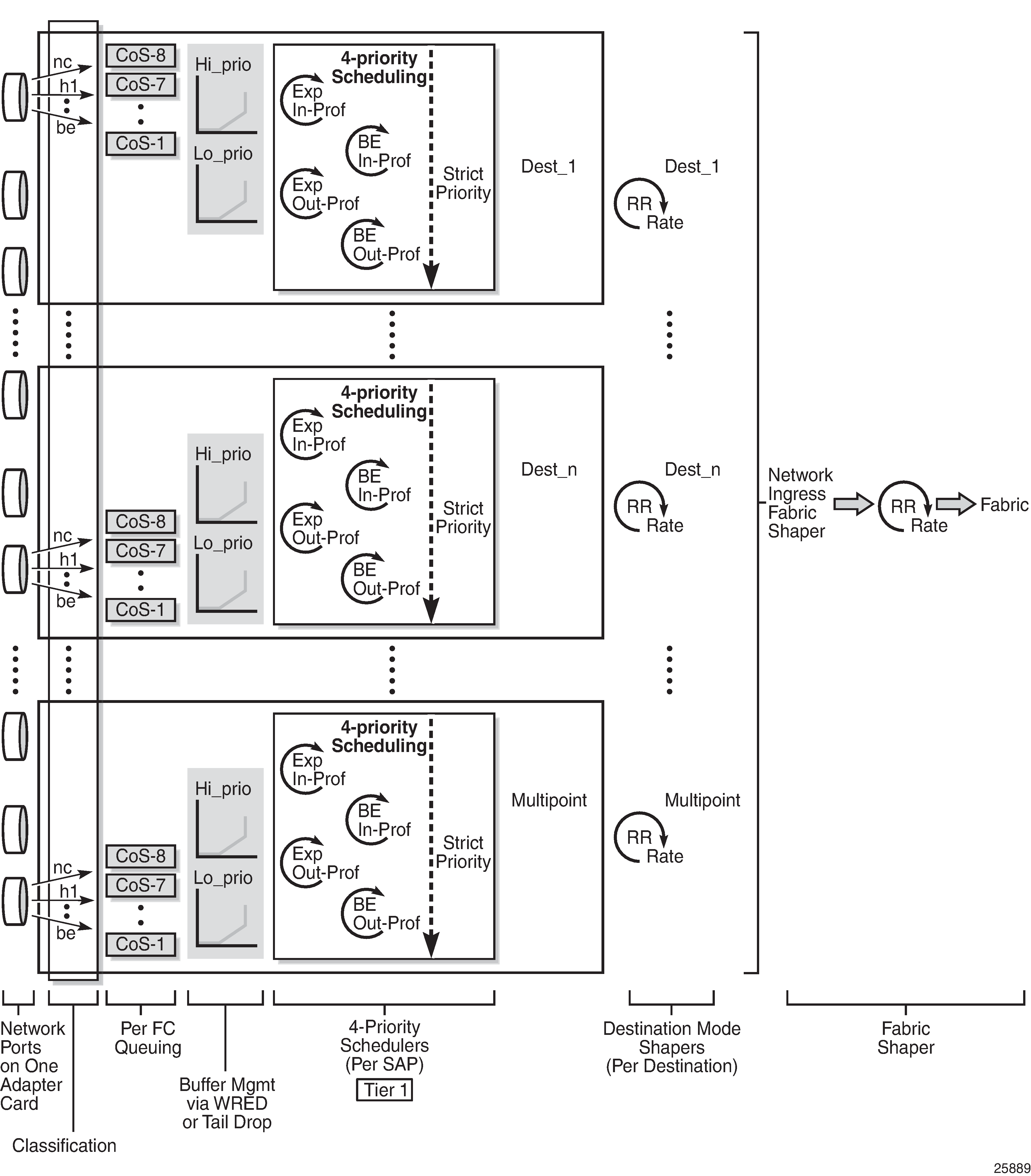

The following figure shows 4-priority scheduling for Gen-3 hardware at network egress. Queue-level CIR and PIR values and the queue type are determined at queuing and provide the scheduling priority for a given flow across all shapers toward the egress port (#1 in Figure: 4-Priority Scheduling at Network Egress (Gen-3 Hardware) on a Network Port). At the per-VLAN aggregate level (#2), only a single rate—the total aggregate rate (PIR)—can be configured; CIR configuration is not supported at the per-VLAN aggregate-shaper level for network egress traffic. All VLANs are aggregated and scheduled by a 4-priority aggregate scheduler (#3). The flow is then fed to the port shaper and processed at the egress rate. In case of congestion, the port shaper provides backpressure, resulting in the buffering of traffic by individual FC queues until the congested state ends.
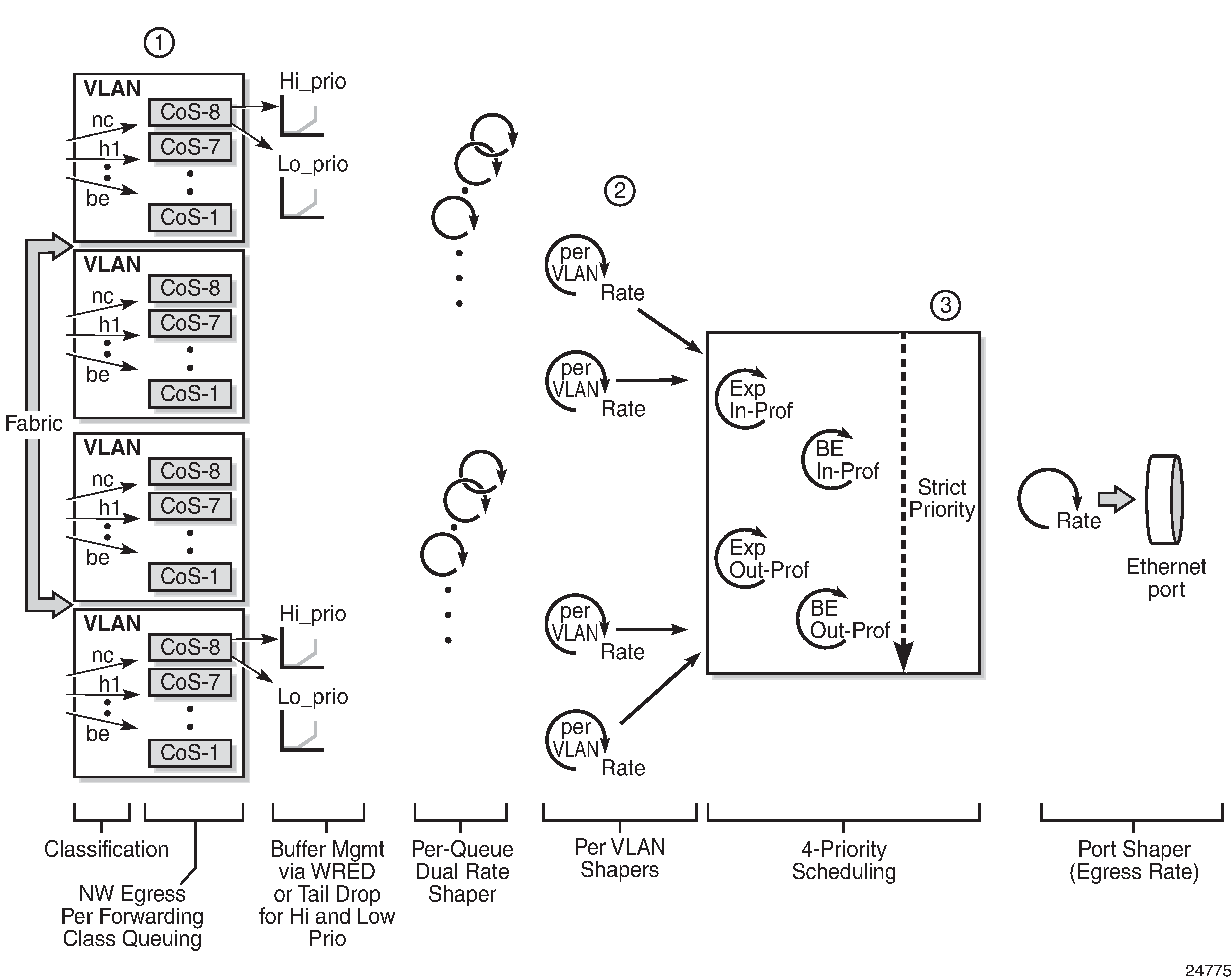
Figure: 4-Priority Scheduling for Hybrid Port Egress (Gen-3 Hardware) shows 4-priority scheduling for Gen-3 hardware where ports are in hybrid mode. The QoS behavior for both access and network egress traffic is similar except that the access egress path includes tier 3, per-customer aggregate shapers. Access and network shapers prepare and present traffic to the port shaper, which arbitrates between access and network traffic.
The 4-priority schedulers on the Gen-1/Gen-2 and Gen-3 hardware are very similar, except that 4-priority scheduling on Gen-3 hardware is done on a per-SAP or a per-VLAN basis (for access egress and network egress, respectively).
